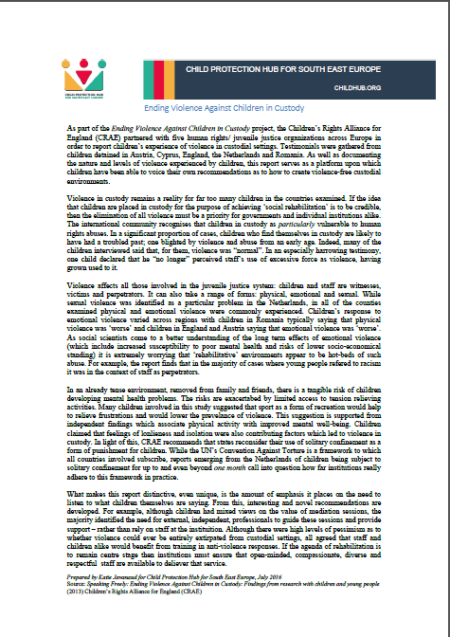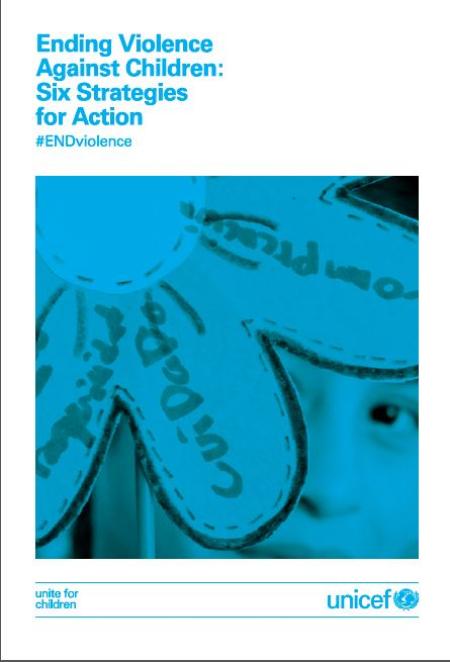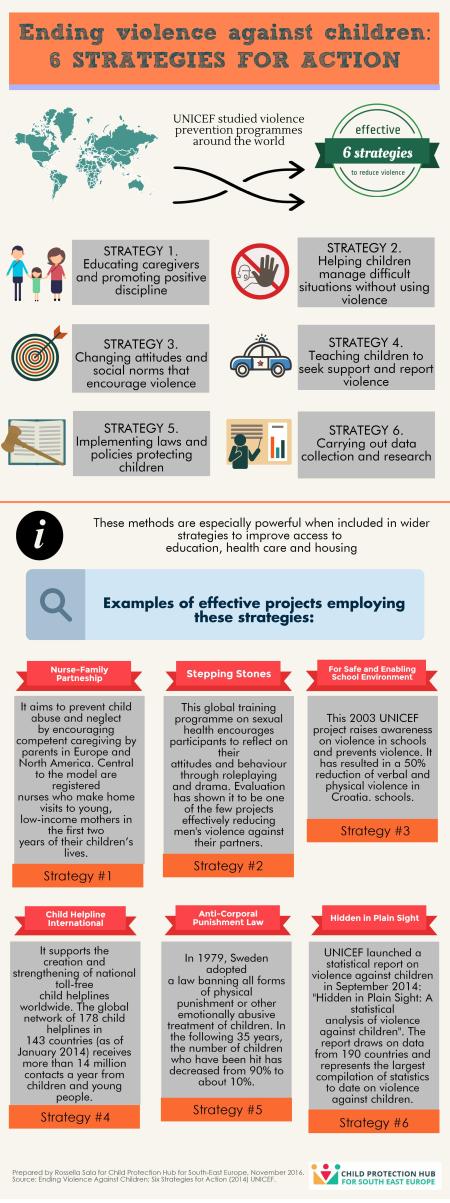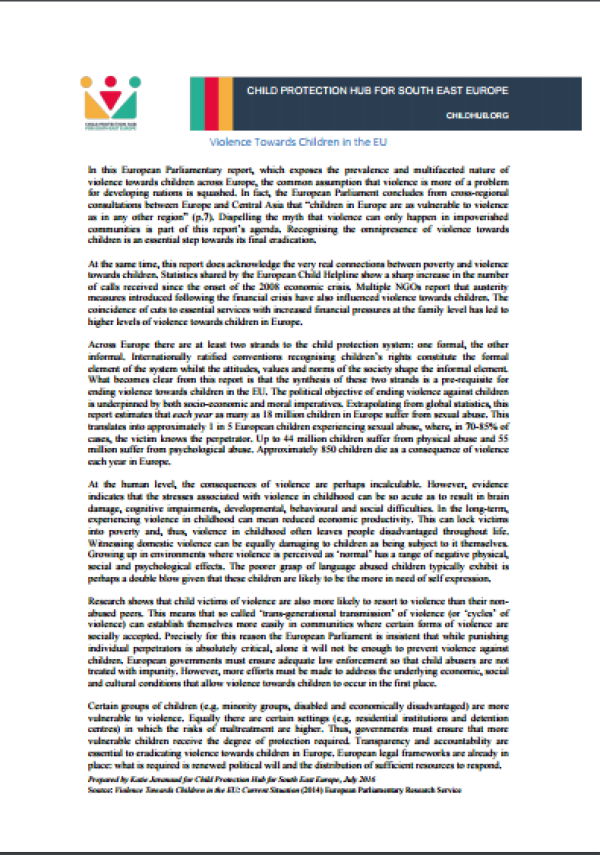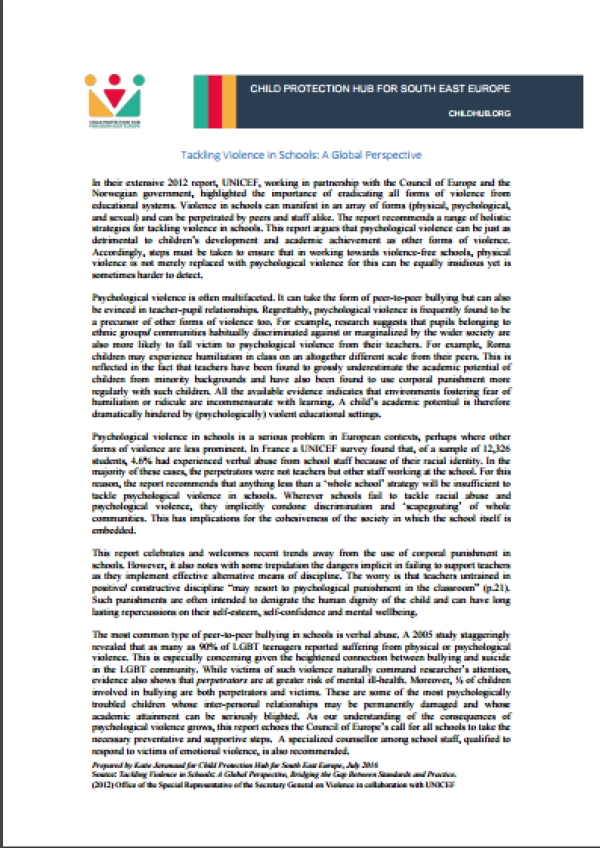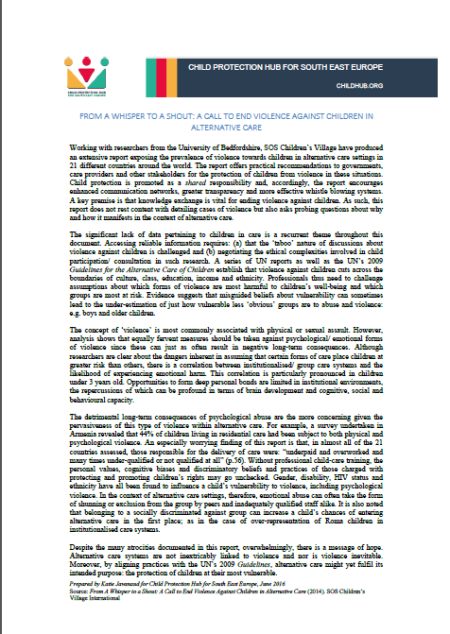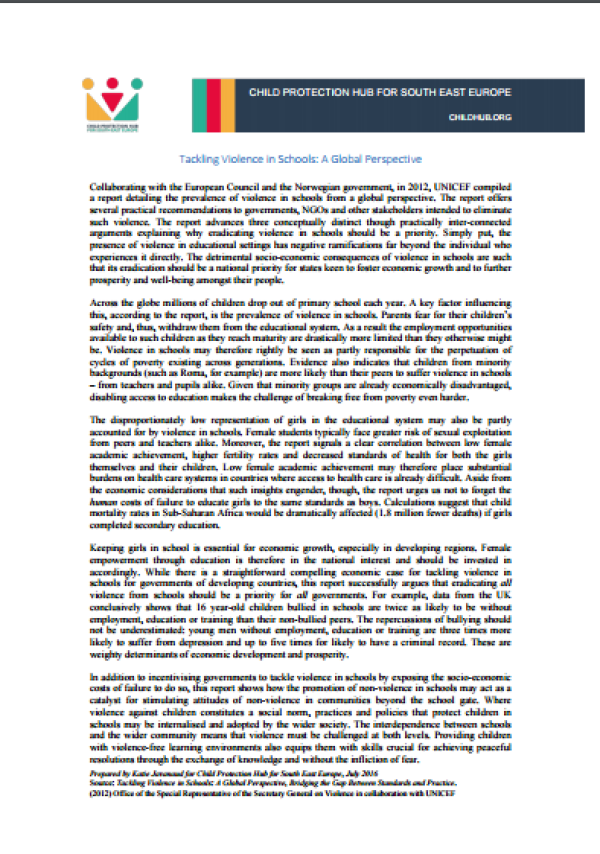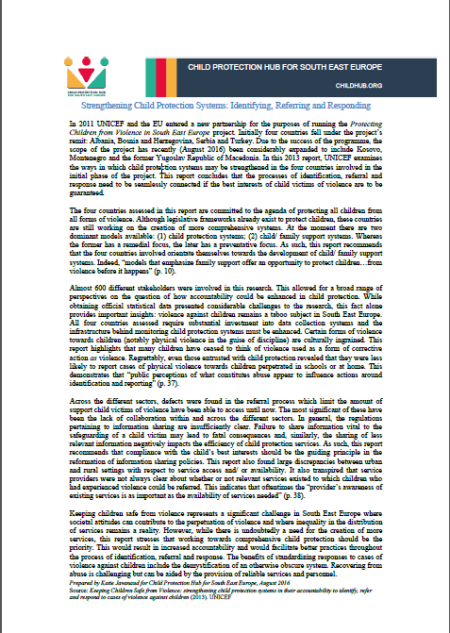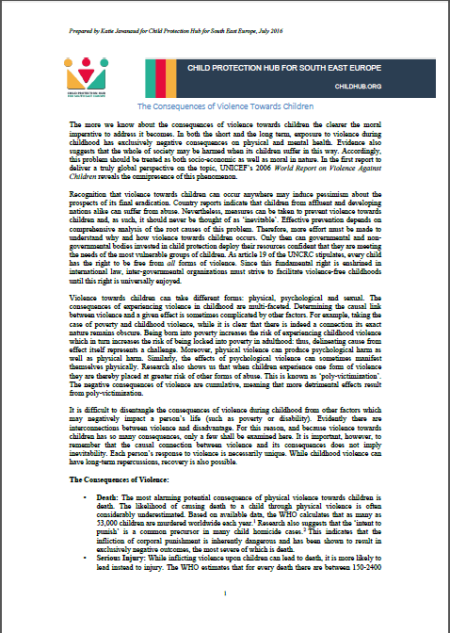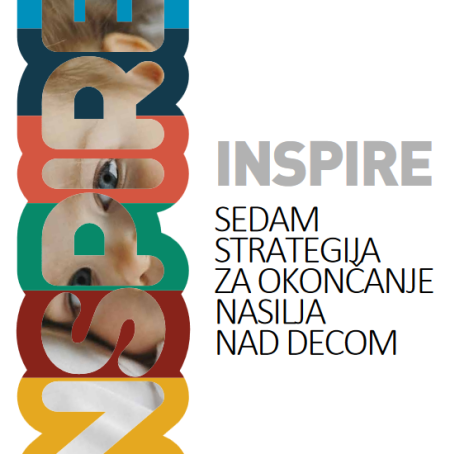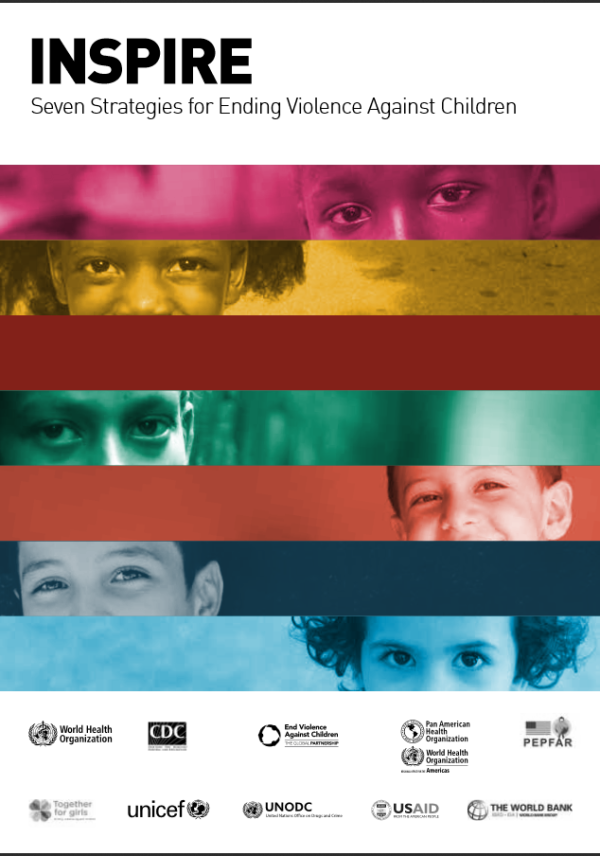
UNICEF has examined the outcomes of numerous violence prevention and intervention programmes implemented around the globe and has consequently identified six strategies shown to be highly effective. The intervention and response projects outlined in this report demonstrate clearly that violence towards children is not inevitable. Indeed, the research indicates that the deployment of certain methods has the capacity dramatically to reduce the level of violence experienced by children. The collective effort of ordinary citizens, policy makers, governments and international stakeholders is essential to the eradication of violence towards children. Forging networks between those in positions of authority with the powers to develop and promote child protection systems is likewise critical to this process.
While other strategies are no doubt yet to be tested, so far, evidence proves the value of:
- Supporting parents, caregivers and families
- Helping children and adolescents manage risks and challenges
- Changing attitudes and social norms that encourage violence and discrimination
- Promoting and providing support services for children
- Implementing laws and policies that protect children
- Carrying out data collection and research
Each of these strategies furthers the goal of ending violence towards children. However, they are more powerful tools when conceived of as contributing to the wider development programme of improved access to education, healthcare and suitable housing etc. Ending violence against children brings many benefits to society as a whole. This report is keen to stress that, even in terms of cost-benefit analysis, the implementation of these techniques pays. For example, the Nurse-Family Partnership programme, which started out in America in 1977 but has since spread to parts of Europe, shows that “net savings from participating high-risk families was four-fold higher compared to the programme cost” (p. 20). In human as well as economic terms, this family support programme has produced extremely positive outcomes. These include: improved prenatal health, noticeable reductions in the number of childhood injuries and a 48% drop in cases of child abuse and neglect amongst families participating in the programme.
The Early Enrichment Programme, designed to encourage positive family environments for underprivileged children, serves as another example of successful intervention to end violence against children. This project is now running in Belgium, Bosnia and Herzegovina, France, Germany, the UK and Turkey amongst other places. Astonishingly, data from Turkey reveal that, once the programme had been underway for two years, children’s experience of physical punishment declined by as much as 78%. These results are the more promising given that, as of 2013, this programme had reached more than 800,000 women and children. Still other programmes establish the importance of equipping children with the necessary skills to respond to violence appropriately. Thus, children are encouraged to speak out and report abuse but also to employ alternative means of conflict resolution in schools.
For Safe and Enabling School Environment project, operative in Bulgaria, Croatia, Kazakhstan, Montenegro, Serbia and Slovenia, has likewise been a success. The two components of this project - one aimed at raising awareness amongst the public about violence in schools and the other aimed at violence prevention – have together resulted in a 50% reduction in verbal and physical violence in Croatian schools. Changing deeply ingrained attitudes, especially those which legitimate or justify certain forms of violence against children, represents a significant challenge. However, while change takes time “it does not have to take generations” (p. 33). Moreover, while changes in law are not enough to guarantee changes in attitude, the 1979 Swedish criminalization of using corporal punishment on children has clearly led to a change in parents’ attitude towards its acceptability. That many other countries have subsequently criminalized corporal punishment provides hope that attitudes will also be transformed.
To read the full report click here



